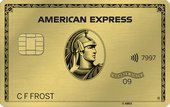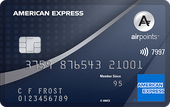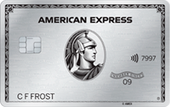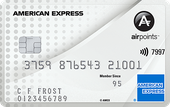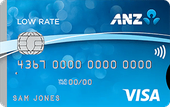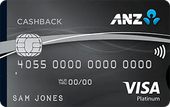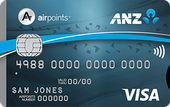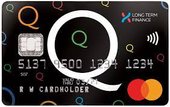Using credit cards is a globally accepted method of making purchases using money borrowed from a lender (usually a bank). Unlike a one-off loan, a credit card offers you a fixed amount of money (i.e. a credit limit) that you can borrow for a brief period and use every month for expenses. You can physically use your credit card to pay for the expenses you have incurred by swiping across a payment terminal (or simply holding it close to the reader in case of a contactless card). You can also use your credit card for online purchases by providing your card details. But it's highly recommended that you only provide your card details to reputable websites and trustworthy online vendors.
In either case, your credit card issuer actually pays the shop/vendor on your behalf, and you then owe money to the card issuer. How you repay your credit has a lot of impact on how much this arrangement is costing you. It also helps you build your credit history (either good or bad), which affects your chances of being approved for a loan, mortgage, or another credit card. It's unsecured debt since you are not borrowing against collateral, and there isn't a guarantor that can take the fall if you are unable to pay off your debt.
Cost of using a credit card
There are several things you need to understand about the costs of using credit cards in New Zealand, but let's start with the simplest scenario.
When you compare credit cards, one of the features you will commonly see listed is 'interest-free days'. While the term seems self-explanatory, it's often misunderstood. Most credit cards come with either 44 or 55 interest-free days.
Let's say you choose a credit card with 44 interest-free days. If you make a purchase using your credit card on the first day of your billing cycle, you will have 44 days interest-free on that purchase. If you pay off your debt within this time, you will not pay any interest charges. But understand that these 44 days didn't start from the day you made the purchase. They started with your billing cycle. If you buy something ten days in your billing cycle, you will have only the remaining 34 days in your 44-day interest-free cycle, in which to pay off your debt interest-free.
So if you use credit cards to make purchases and pay off your debt completely within your interest-free period, it costs you nothing to use your credit card. Well, apart from an annual account fee (or simply annual fee), which for a basic card is usually $20 to $30 a year.
Tip: Some banks offer credit cards with no annual fees to pay.
But life is rarely that simple. What happens when you cannot pay off your credit within the interest-free period? First of all, you will lose your interest-free days for the next billing cycle, at least until your previous debt is paid off. Secondly, you will start accumulating debt according to your card's purchase interest rate (calculated daily based on the per annum rate). Also called the Annual Percentage Rate (APR), it's the interest that you are charged for purchases you made using your credit card until you pay off your carried-over debt completely.
Meanwhile, you will have to make regular minimum payments on your credit card, to ensure that you are only charged the purchase rate interest, and not incurring additional late payment penalties and interest. But if you just pay the minimum payment due (typically a small percentage of your outstanding balance), you will keep accumulating interest on your outstanding debt.
Interest calculation and minimum payments
While the rate is expressed as a percentage per annum, it's calculated on a daily basis. If your credit card's purchase rate is 20% p.a., the daily interest you will accumulate (once your interest-free period has expired) is 0.055% (20% divided by 365 days). If you have an outstanding debt of $2000, you will accumulate $1.10 daily, up until the end of your monthly billing cycle. Your interest amount in the following month will be calculated based on the debt remaining after the minimum payment has been deducted.
Assuming you have a 2.5% minimum monthly payment, you will need to pay $50 when your credit card bill arrives. That amount will be subtracted from your outstanding balance. So $2,000 now becomes $1,950. But you have also accumulated interest at a rate of 0.055% per day for the number of days in the billing cycle (e.g. 30 days)
So: 0.055% x $2,000 x 30 = $33, which will be added to the balance, making it $1,983.
As you can see, the cycle will continue, especially if you keep putting off repaying your debt completely and just pay the minimum amount. Every month the minimum repayment will be subtracted from the outstanding balance, but new accumulated interest will be added. It increases your chances of getting caught in a long-term debt trap, and you can end up paying way more than the principal amount you borrowed if you don't pay off your outstanding credit in sizeable chunks.
Order of payments
If you have accumulated different kinds of credit debt on a single card, your repayment can get a little more complicated. For example, if you have both outstanding purchase debt and cash advance debt (charged at a higher interest rate), the latter will be paid off first when you make a payment towards your outstanding balance.
Purchases and cash advances
The most common use of a credit card is to pay for goods or services, which is why its default interest rate is dubbed the purchase rate. Another frequent use of a credit card is to take out a cash advance. Cash advances are typically charged at a higher interest rate, and don't qualify for interest-free days. Just like a personal loan, you will start incurring interest from the moment you take out a cash advance, and it will keep accumulating until you pay it off completely. Credit cards are expensive when they aren't paid off in time. But they are even more expensive when used for cash.
Balance transfers
Another common way to use a credit card is to make a balance transfer. That is, if you transfer your outstanding debt from one card to another with a promotional balance transfer offer, you may be able to pay zero or low interest for an introductory period. It's not available on every credit card and may have some other more stringent requirements.
When considering a balance transfer option, compare credit cards for all the terms and interest rates. Also, consider your ability to pay off your outstanding balance before the revert interest rate kicks in.
International spending
While Visa, Mastercard, and American Express cards issued in New Zealand can be used internationally, it's a good idea to look into your card's terms and conditions, and the additional charges incurred for international use. Two typical fees associated with international use are currency conversion assessment and foreign currency margin. The extra cost is typically 1.80-4.5% added to your original purchase amount after conversion to NZD.
Credit card features
While credit cards serve a common purpose, there are a few different types of credit cards available in New Zealand. The right credit card type depends upon your spending habits and your overall financial goals. There are a few features you can compare in different credit cards to help you decide which one suits your needs best.
- Credit limit: While it's always advisable to stay well within your credit limit, a higher credit limit may sometimes be needed, especially if you are a heavy spender. However, a higher credit limit might be an issue when you are applying for a mortgage because banks in New Zealand calculate your ability to repay your mortgage based on your available credit limit, and not on how much credit you actually use per month.
- Low interest: Low interest cards are best suited to people who use their cards frequently but rarely pay them off in full, i.e., they mostly make the minimum repayment with an occasional overpayment, but they typically always carry a revolving balance. In cases such as these, the lower the interest rate the better, since it keeps the debt more manageable.
- Low fee: In a lot of cases, low-interest cards inherently have a low-fee or no-fee feature. In New Zealand, the ASB VISA Light is an example of a no-fee and low interest rate credit card.
- Balance transfer: A good balance transfer credit card would ideally have a decent zero-interest period, and low interest rates afterward, compared to the card you currently have. Even if you stick with the bad habit of making minimum payments for several consecutive months, transferring your debt to a card with better terms/rates can save you hundreds, or even thousands of dollars.
- Interest-free: Permanently interest-free or 0% interest credit cards don't exist. A few credit cards come with an interest-free period (typically for the first six months), but that's rare for a new card. This feature is usually only available on balance transfers.
- Rewards, benefits and cashback: To stay ahead of the competition, and to provide incentives other than low interest rates, many banks offer very lucrative rewards and incentives. When you are making a comparison between different credit cards, be sure to consider the rewards that each card is offering. These rewards can be Airpoints dollars, in-store discounts, luxury rewards (like high-end smartphones), online purchase discounts, and cashback per dollar spent. Apart from providing good points of comparison, sometimes credit card rewards and benefits can be a very financially savvy decision when choosing one card over another.
Credit card alternatives
Despite all the added benefits, credit cards have the inherent risk of incurring and increasing your debt obligation, especially if you can't or don't pay off your debt in full on the due date. However, if used wisely, and while exercising strict financial discipline, credit cards can be efficient tools for managing your finances.
- Cash: The simplest alternative to credit cards is good old cash, but it's becoming less and less a norm as we enter into an era of cashless transactions. According to an estimate, only about seven percent of people in New Zealand use cash in most of their transactions.
- Debit card: The second, most viable and most used option is a debit card, where you pay for your expenses using your own money. It's smart, efficient, doesn't incur debt and additional expenses, and the best part is that it forces you to stay within your means. With credit cards, you can get into a bad habit of buying things that you don't need, knowing that you don't need to pay for them for a while. Even people that are careful with their spending can get a little carried away with a credit card.
- Q Card: While not a true alternative to a credit card, Q Card is also very common in New Zealand. It combines the features of a store card and a credit card, but unlike the latter, you can defer paying off your Q Card for up to three months without incurring any interest or additional penalties. That is, if you keep up with the minimum payment. Thousands of vendors in the country accept Q Card payments, and some even offer additional incentives for using Q Cards.
- Buy now pay later services: One of the most popular credit card alternatives, especially with millennials, are the buy now pay later services. Afterpay, Laybuy, Zip, and Oxipay all operate in New Zealand. These services allow you to spread the cost of a purchase over a fixed term. Unlike a credit card, you know it will be paid off in a fixed amount of time and typically with no interest charged. However, there are serious concerns that these services facilitate impulse spending, which is particularly problematic given that they can be funded with a credit card.
- Personal loans: Depending on what you want to use the funds for, a personal loan may be a better option. Personal loans provide the funds you need, but since they do not operate like a credit card, you are less likely to get further into debt. They can be used to fund many things like holidays, home renovation work, wedding expenses, buying a car, and much more. They are also popularly used to consolidate multiple debts into one loan.
Cards, including both credit and debit cards, are by far the most common mode of payment in New Zealand. And by adopting some good credit card practices, you can enjoy the added benefits of using credit, without accumulating interest payments and debt.
